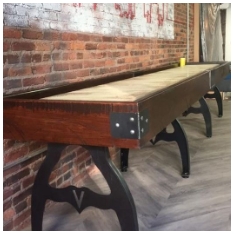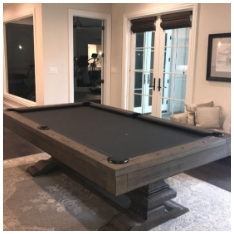Maintaining a pool table is essential for ensuring its longevity and performance. Pool tables, whether used for leisure or competitive play, require specific care and attention. In this guide, we will explore practical steps on how to maintain and care for your pool table, ensuring it remains in excellent condition for years to come.

Understanding Your Pool Table
Types of Pool Tables
Before delving into maintenance, it's important to understand the types of pool tables available. Most commonly, you'll find:
- Slate Pool Tables: Known for their durability and level playing surface, these tables are the preferred choice for serious players.
- MDF Pool Tables: Made from medium-density fiberboard, these are often more affordable and suitable for casual play.
Understanding the type of table you have will help inform your maintenance routine.
Components of a Pool Table
A pool table consists of several key components:
- Playing Surface: Usually made from felt or cloth, this is where the game is played.
- Rails: These are the edges of the table that frame the playing surface.
- Pockets: The openings where the balls are sunk.
- Frame: The structure supporting the table.
Familiarizing yourself with these components will aid in effective maintenance.
Regular Maintenance Tips
Cleaning the Playing Surface
The playing surface of your pool table is crucial for a smooth game. Here's how to care for it:
Use a Soft Brush
Regularly brushing the surface with a soft-bristled brush removes dust and debris. Brush in a circular motion to avoid damaging the felt.
Spot Cleaning
If spills occur, blot the area immediately with a clean, dry cloth. Avoid rubbing, as this can damage the fibers. For tougher stains, use a gentle cleaning solution specifically designed for pool table felt.
Caring for the Rails and Pockets
The rails and pockets also require attention:
Wipe Down Rails
Use a damp cloth to wipe down the rails, ensuring no excess moisture is left behind. This helps prevent warping or damage to the wood.
Inspect and Clean Pockets
Check the pockets regularly for debris. Remove any dirt or chalk build-up to maintain the aesthetics and functionality of the pockets.
Protecting Your Pool Table
Use a Cover
When not in use, cover your pool table with a fitted table cover. This protects the surface from dust, pet hair, and accidental spills. A cover can also prevent sunlight from fading the felt over time.
Avoid Direct Sunlight
Position your pool table away from direct sunlight. Prolonged exposure can lead to fading and deterioration of the felt and wood finishes.
Seasonal Maintenance
Deep Cleaning
At least once a year, perform a deep clean:
Remove the Felt
If your felt shows signs of wear, consider removing it and replacing it. This is a good opportunity to clean the slate beneath thoroughly.
Check the Slate
Inspect the slate for any cracks or chips. If you notice any damage, it may require professional repair.
Adjusting the Level
A level playing surface is essential for fair play. Use a level tool to check the table regularly. Adjust the legs as needed to maintain proper leveling.
Common Issues and Solutions
Dents and Scratches
Over time, your pool table may develop dents or scratches:
- For Dents: Use a damp cloth and an iron to gently steam the area. This can help lift the dent.
- For Scratches: Use a wood repair pen to touch up small scratches. For larger areas, consult a professional for refinishing.
Felt Wear and Tear
If the felt begins to wear out, it’s important to replace it to ensure smooth gameplay. This is a more extensive process, and hiring a professional may be advisable.
Conclusion
Caring for your pool table involves regular cleaning, protection from the elements, and seasonal maintenance. By following these steps, you can enjoy your pool table for many years. Whether you’re playing for fun or competitively, maintaining your pool table will enhance your experience and preserve its quality.





